Blended Learning Strategies for Modern Teams: Mix Online and In-Person Like a Pro
Master blended learning strategies that boost engagement and retention across digital and face-to-face training.
Master blended learning strategies that boost engagement and retention across digital and face-to-face training.

Training teams feel stuck in a loop: either costly all-day classroom sessions or lifeless online modules that employees forget by Monday. Luckily, blended learning offers a smarter way forward. It merges live, face-to-face instruction with flexible digital content, giving learners both human interaction and learning at their own pace.
In this guide, we’ll explain what blended learning is, outline the main idea behind the approach, explore the pros and cons, share real examples, and show you step-by-step how to create a blended learning strategy.
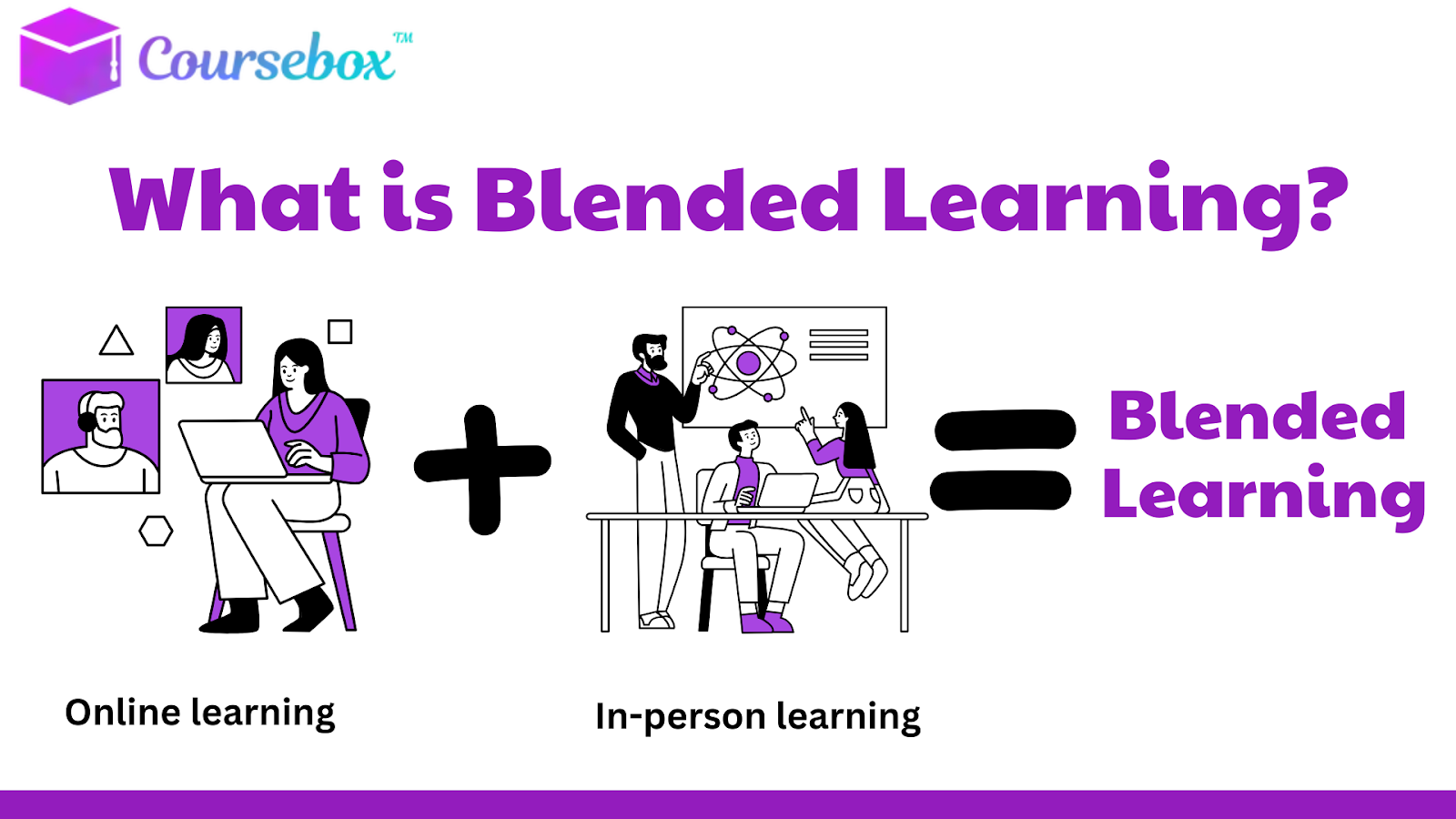
Blended learning combines digital experiences with live, face-to-face sessions to create a flexible and engaging training environment. Instead of choosing between online courses and classroom instruction, organizations use both methods to deliver knowledge more effectively.
This hybrid approach allows employees to learn theory online through videos, quizzes, or e-modules and then apply those lessons during in-person workshops or discussions. Trainers guide, mentor, and provide feedback, while learners enjoy control over pace and schedule.
The main idea behind blended learning lies in balance: digital tools build consistency and accessibility, while human interaction boosts understanding, motivation, and retention.
Companies using this model often report faster knowledge transfer, improved engagement, and stronger performance outcomes. A 2024 LinkedIn Learning report even noted that blended programs increase learner satisfaction by nearly 30% compared with fully online models.
NOTE: Don’t mistake blended learning for hybrid learning. They’re different. Learn more about their differences in our comparison guide.
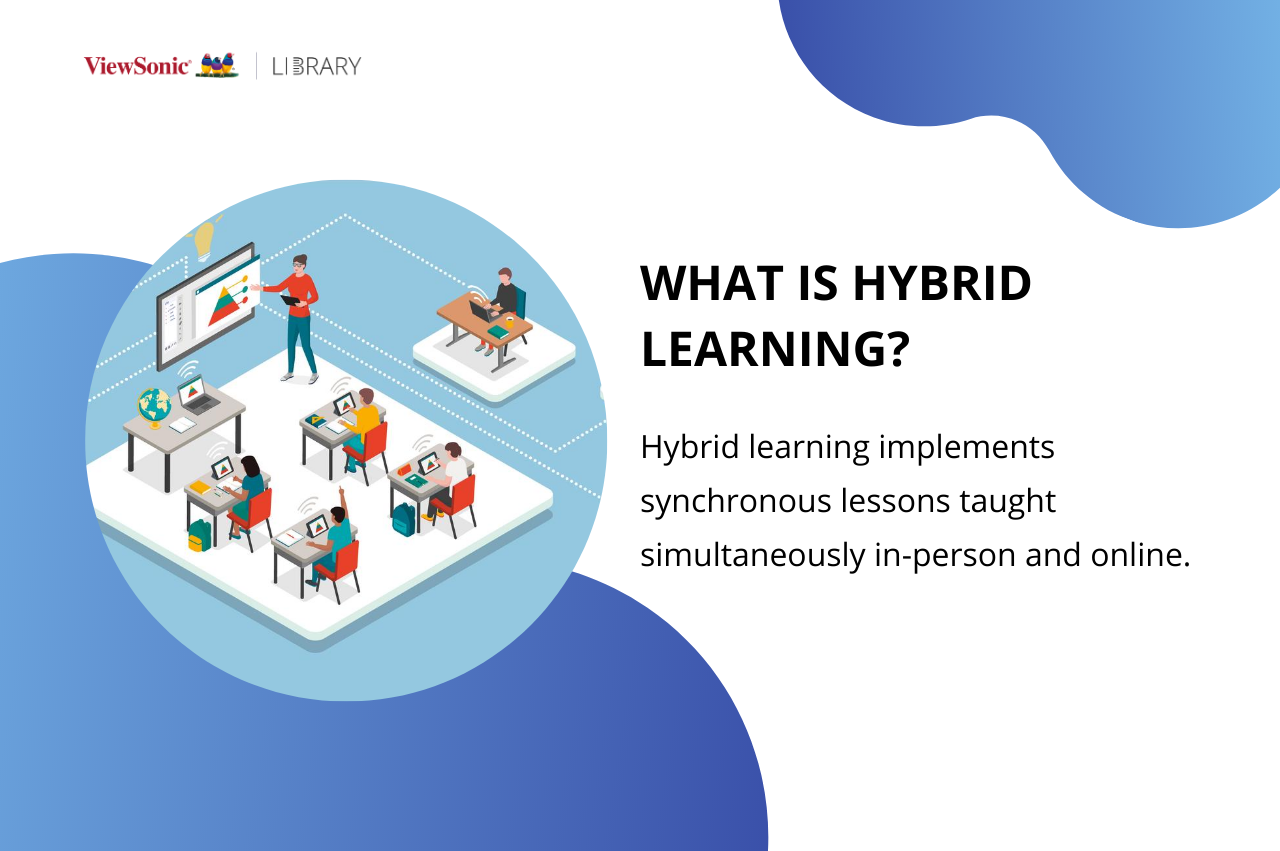
Blended learning brings together the best of both educational worlds. Here’s a breakdown of some of the key benefits of blended learning:
Employees can study on demand and revisit complex topics anytime, reducing scheduling conflicts and boosting retention.
Combining videos, simulations, and live discussions makes content more interactive and relatable.
Digital modules cut travel, materials, and venue costs, while live sessions keep the personal touch.
Learners practice essential skills during workshops after completing theory online, reinforcing real-world application.
Digital platforms track progress, highlight weak spots, and help trainers refine materials for future sessions.
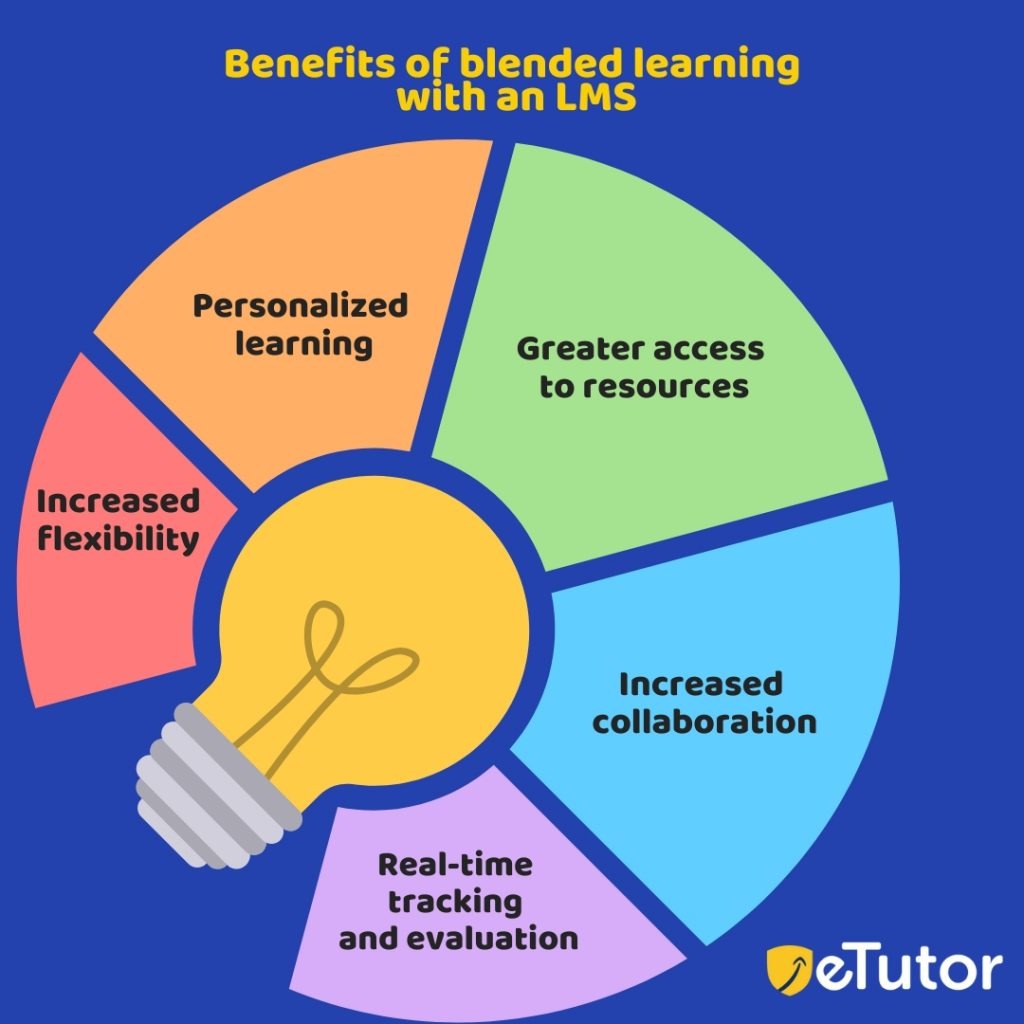
While blended learning has clear strengths, it also brings challenges that require thoughtful planning:
Reliable internet access, devices, and learning platforms remain essential for seamless delivery.
Facilitators must adapt to digital tools and reimagine lesson structures that suit both formats.
Designing quality content across multiple channels takes effort and planning.
Some learners engage deeply online, while others prefer face-to-face settings—finding balance takes experimentation.
Shifting from a traditional setup to blended training may meet hesitation from staff or management at first.
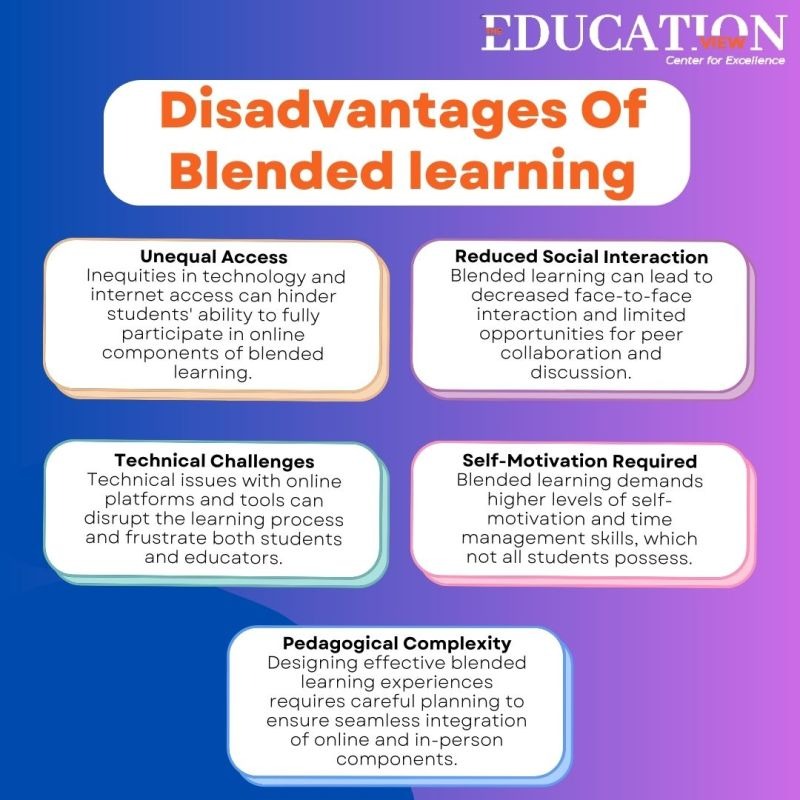
A blended learning strategy is a planned way to combine digital learning with in-person training to reach specific learning goals. It doesn’t just mix online modules with classroom sessions. Each part is designed to work together, keeping learners engaged, helping them remember more, and giving them chances to practice new skills.
Good strategies take into account learning goals, employee needs, and available resources, making sure content connects to real work tasks. Theory and concepts often happen online through videos, quizzes, or e-modules, while workshops, simulations, and group discussions let employees apply what they’ve learned and get feedback.
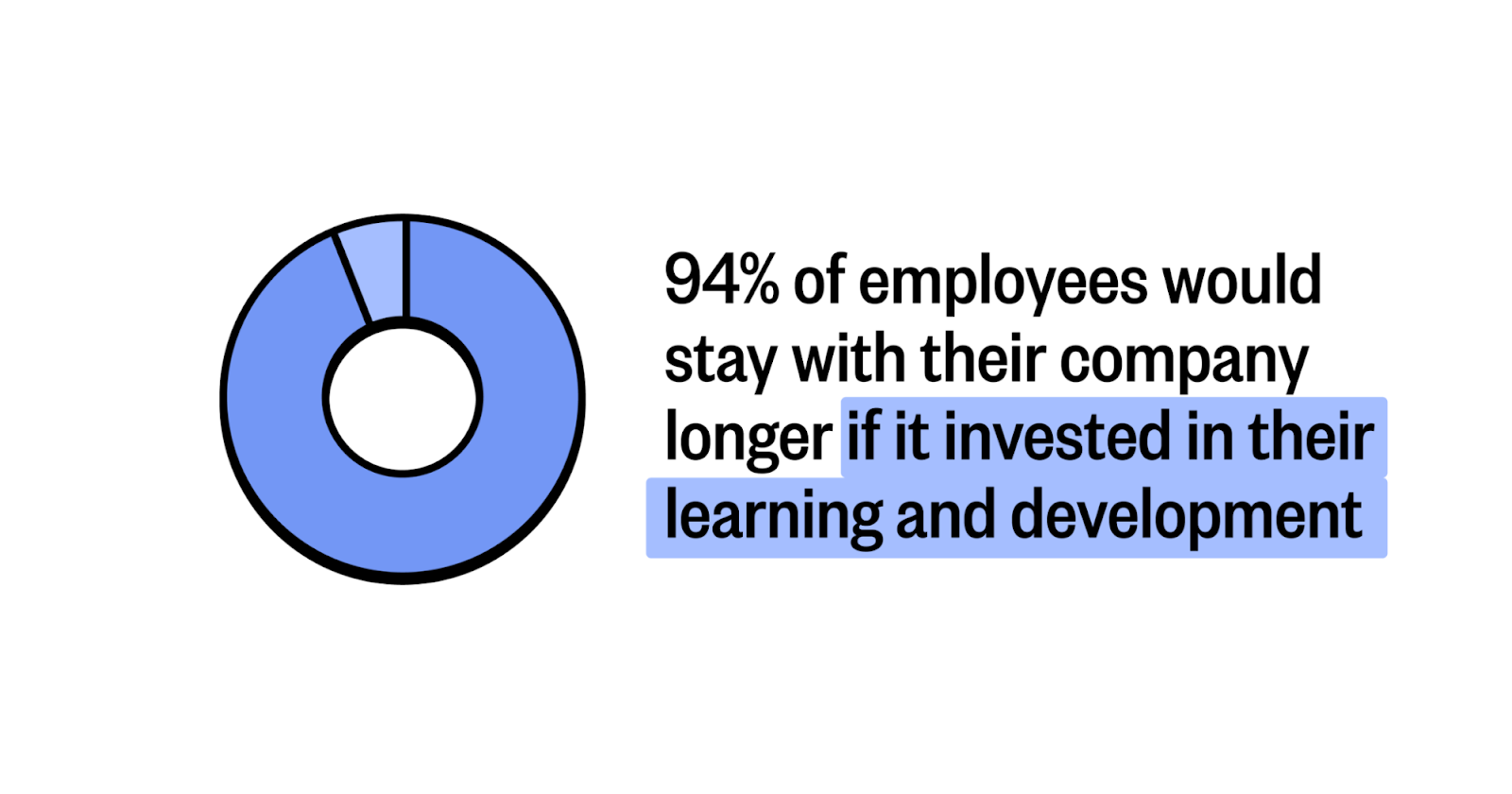
Organizations using a clear blended learning strategy can track progress, create personalized learning paths, and keep training consistent across teams or locations.
Blended learning helps companies provide training that’s flexible, practical, and easy to scale, while keeping employees engaged, motivated, and ready to use new skills in real work.
Blended learning comes in many shapes, each designed to mix online and in-person instruction in ways that fit different goals, schedules, and learner needs. Let’s look at practical examples that work well in modern workplaces:

Employees rotate between different learning modes, such as self-paced e-learning, small-group discussions, and hands-on workshops. This keeps training dynamic, lets learners practice concepts in real time, and ensures no one falls behind.
Pro Tip: Use blended learning tools to schedule rotations and track learner progress automatically for smoother transitions.
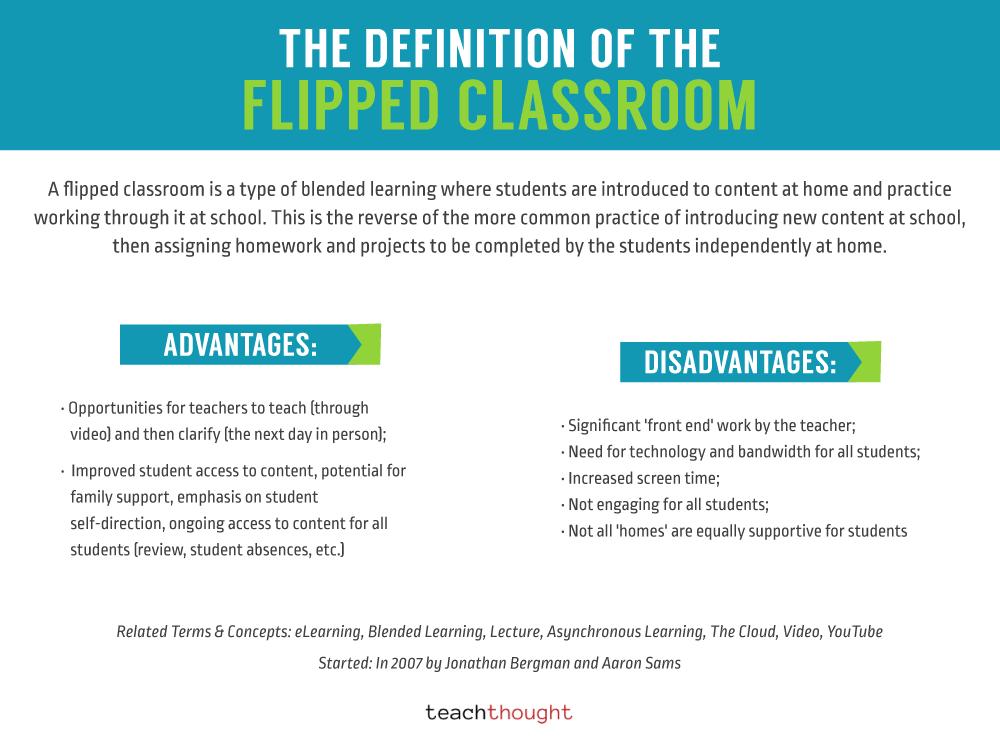
Learners review lessons online at their own pace before attending live sessions. Class time focuses on discussions, problem-solving, and real-world application, turning theory into actionable skills.
Pro Tip: Provide clear instructions and deadlines for online modules to ensure learners come prepared to engage in live sessions.
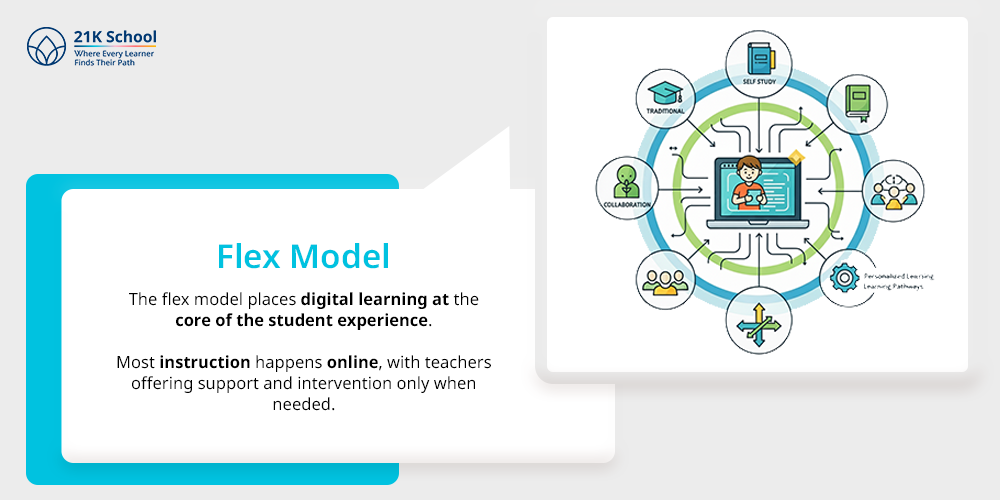
Employees complete most training online, with instructors available for guidance when needed. This model offers high flexibility and works especially well for distributed teams or learners with different skill levels.
Pro Tip: Schedule optional live Q&A or office hours to keep learners supported and connected.
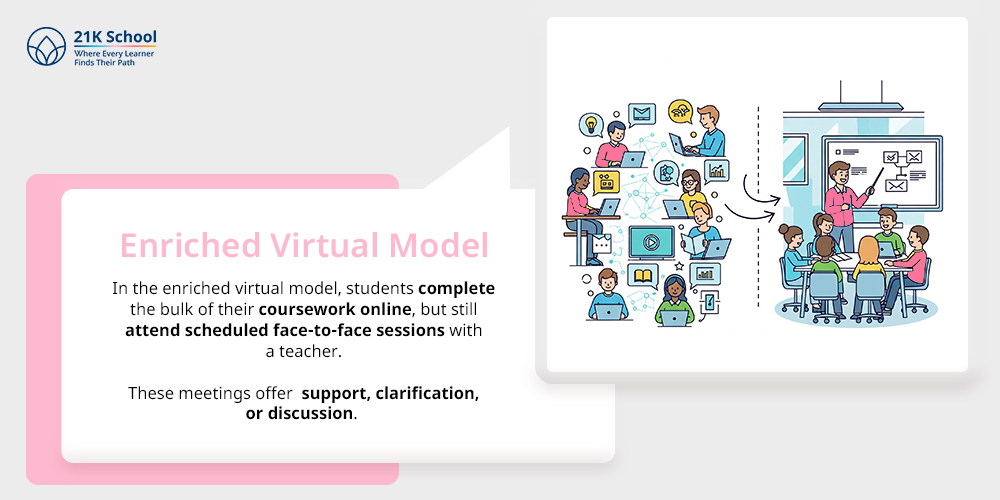
Learners complete coursework online but join scheduled instructor-led sessions for coaching, feedback, or group activities. This model works for remote teams needing occasional in-person guidance to stay engaged.
Pro Tip: Record instructor-led sessions for learners who can’t attend, so everyone stays aligned.

Learners do online training together in a supervised setting, such as a training room at work. A facilitator helps with technical issues, making this model perfect for compliance training, product knowledge, or onboarding sessions.
Pro Tip: Use online tracking tools to monitor progress and provide instant assessments during lab sessions.
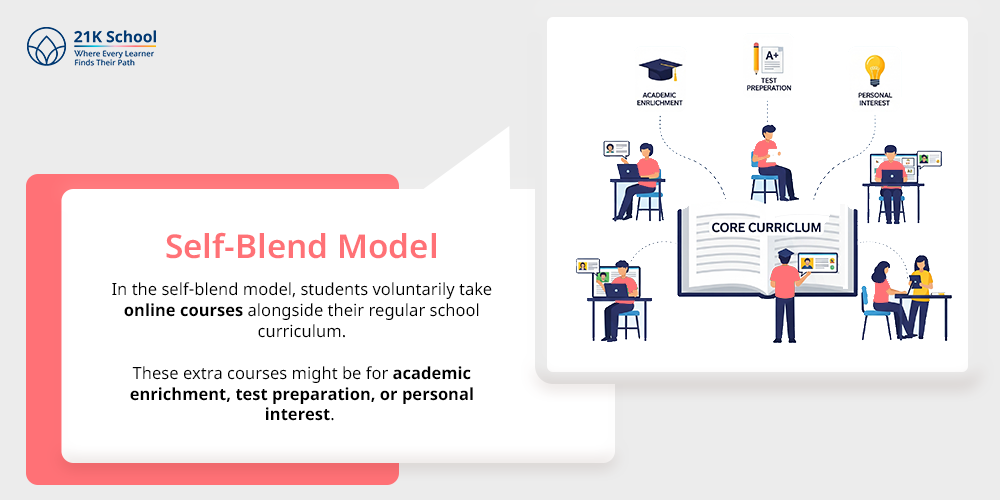
Employees combine in-person and online courses based on individual needs. This strategy fills knowledge gaps and allows learners to explore extra skills beyond mandatory training.
Pro Tip: Offer recommended learning paths and suggested training courses to guide learners without restricting choice.
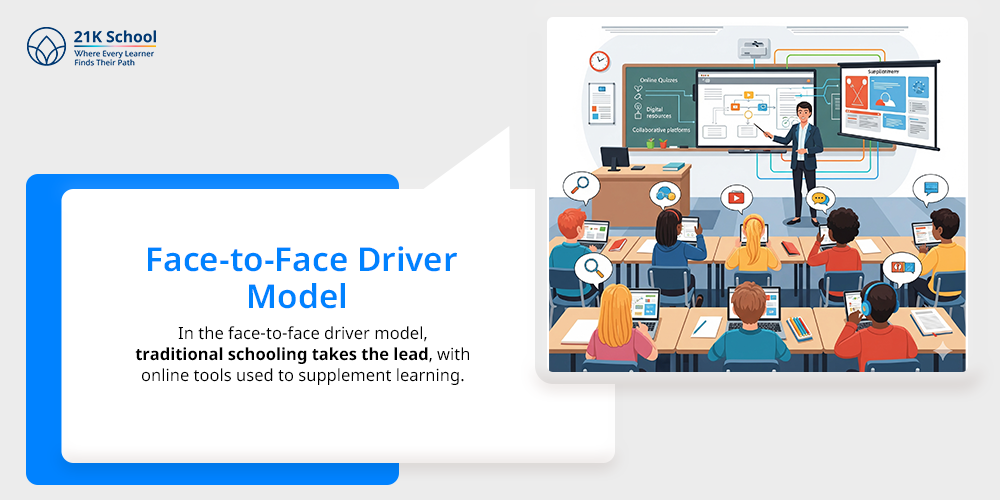
Most instruction happens in person. Online resources supplement learning. Ideal for hands-on skills or groups with mixed abilities.
Pro Tip: Use online quizzes and resources to reinforce classroom content and track progress digitally.
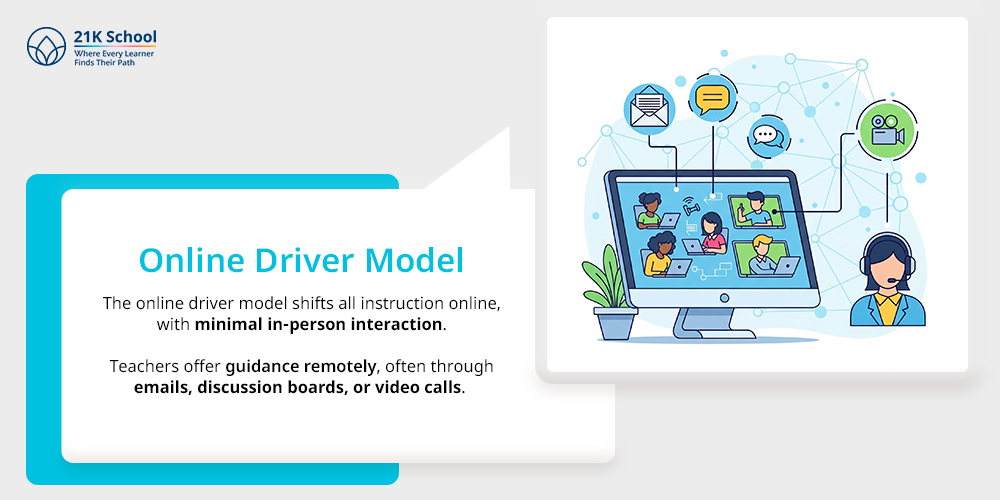
Learning happens mostly online, with minimal in-person sessions. Perfect for distributed teams or remote learners.
Pro Tip: Schedule periodic live sessions for Q&A or group discussions to maintain human connection.
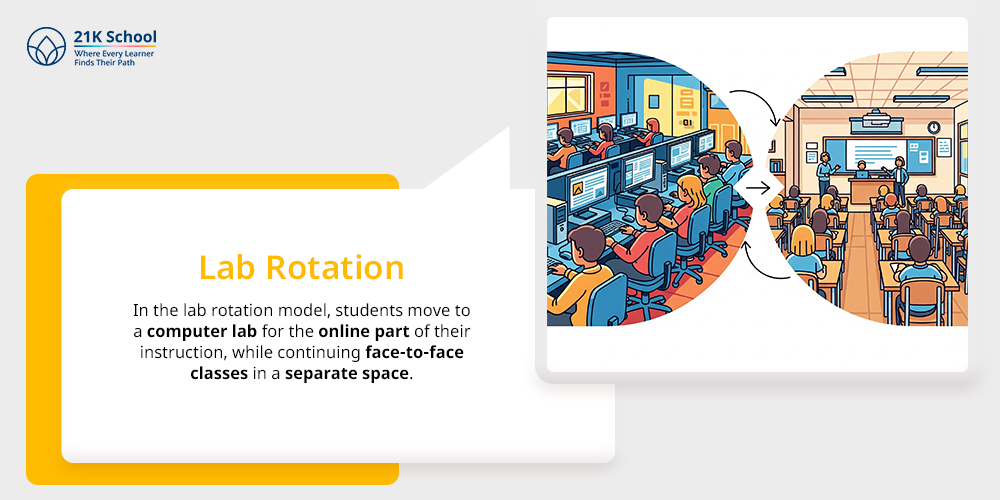
A variant of the rotation model where learners complete online components in a dedicated lab with supervision. Useful for technical or compliance training.
Pro Tip: Combine lab rotation with microlearning modules to maximize retention and engagement during supervised sessions.
Launching a blended learning program doesn’t need to feel overwhelming. A clear training roadmap can make the process smooth, effective, and tailored to your organization’s needs.
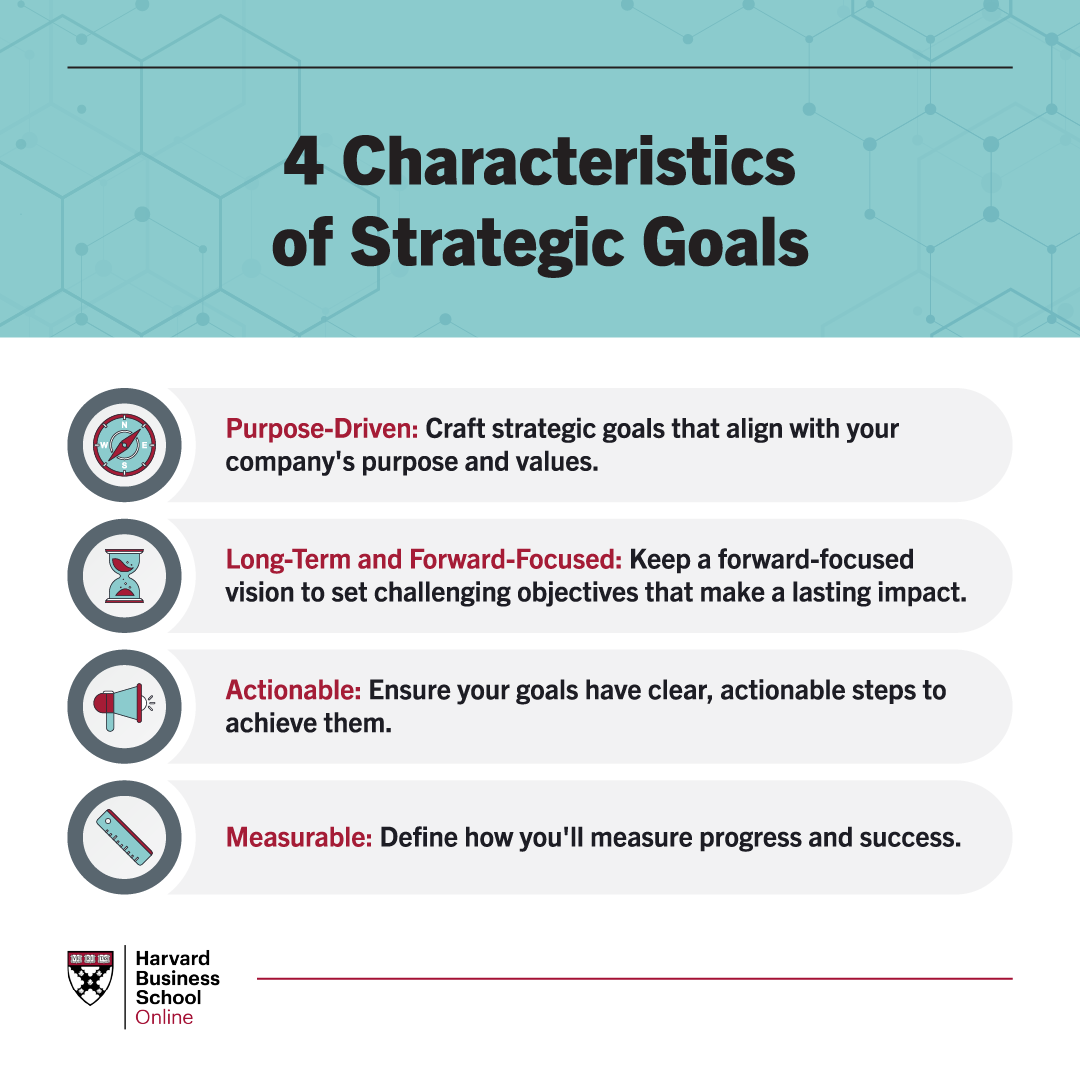
Start by clarifying what your program should achieve. Do you want employees to develop technical skills, improve collaboration, or become more self-directed learners? Goals guide the choice of learning models and help measure success later.
Select a model that fits your goals and audience. Options include:
Pro Tip: Match your model to both the learning objective and the learner persona. For example, hands-on skills thrive in rotation or lab models, while theory-heavy or remote-friendly content works best in online driver or self-blend models.
Online learning requires the right technology. Authoring tools help you design engaging content, while learning management systems (LMS) distribute materials, track progress, and support collaboration.
Tools like Coursebox AI can simplify course creation, automate assessments, and provide analytics to measure learning effectiveness.

Whether online or in-person, learning environments matter. For in-person sessions, organize spaces for workshops, group activities, or simulations. For online components, ensure access to devices, a stable internet, and interactive tools.
Start small, track engagement, completion rates, and feedback. Use insights to adjust course content, pacing, or delivery methods. Remember, blended learning results build over weeks, so be patient and iterate continuously.
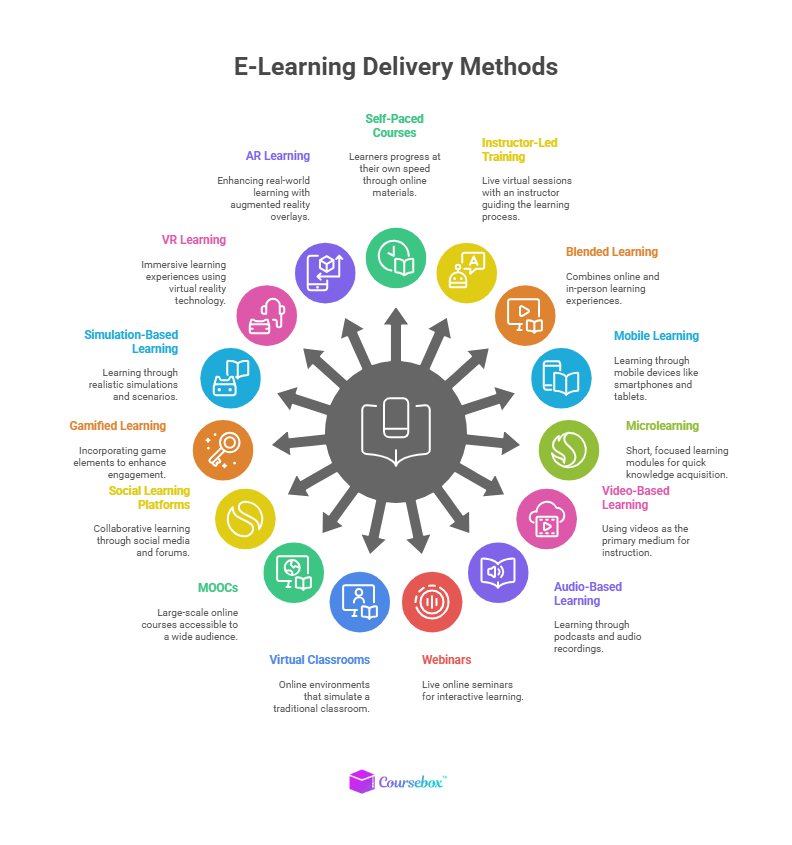

Blended learning succeeds when organizations move beyond simply combining online and in-person training. Experts recommend:
Ready to put these tips into practice? Coursebox AI makes designing, delivering, and tracking blended learning effortless. Try it now with a free trial and transform your training programs today.
Blended learning combines online and in-person instruction to create flexible, engaging training. Examples include the rotation model, flipped classroom, flex model, enriched virtual, online lab, and self-blend strategies. Each approach adapts to learner needs, content, and workplace requirements.
Four common learning strategies include: self-directed learning, collaborative learning, experiential learning, and blended learning. Each strategy helps learners engage differently, retain knowledge better, and apply skills in real-world situations, making workplace or academic training more effective and adaptable.
Three popular blended learning types are rotation, flex, and enriched virtual models. Rotation mixes online and offline activities, flex centers on online learning with instructor support, and enriched virtual combines mostly online study with occasional scheduled coaching sessions.
The “best” blended learning model depends on goals, audience, and content. For hands-on skills, rotation or flipped classrooms excel. For remote teams, flex or enriched virtual models maximize engagement, flexibility, and knowledge retention while reducing logistical challenges.
Blended learning may demand tech access, careful planning, and self-motivation from learners. Challenges include inconsistent participation, resource requirements for online tools, and potential gaps if learners skip online or in-person components, requiring monitoring and tailored support.
Best practices include aligning content with objectives, mixing synchronous and asynchronous methods, tracking progress, using interactive tools, and personalizing paths. Combining online lessons with in-person discussions ensures engagement, knowledge retention, and practical skill application.
A blended teaching style integrates face-to-face instruction with online resources. Instructors deliver lectures, discussions, or workshops in person while providing digital modules, quizzes, and videos online, creating a flexible, interactive, and learner-focused educational experience.
Blended learning mixes online and in-person methods deliberately for engagement and skill retention. Hybrid learning often refers to simultaneous in-person and remote sessions. The key difference lies in instructional design: blended learning emphasizes integrated strategies, while hybrid may simply combine formats.